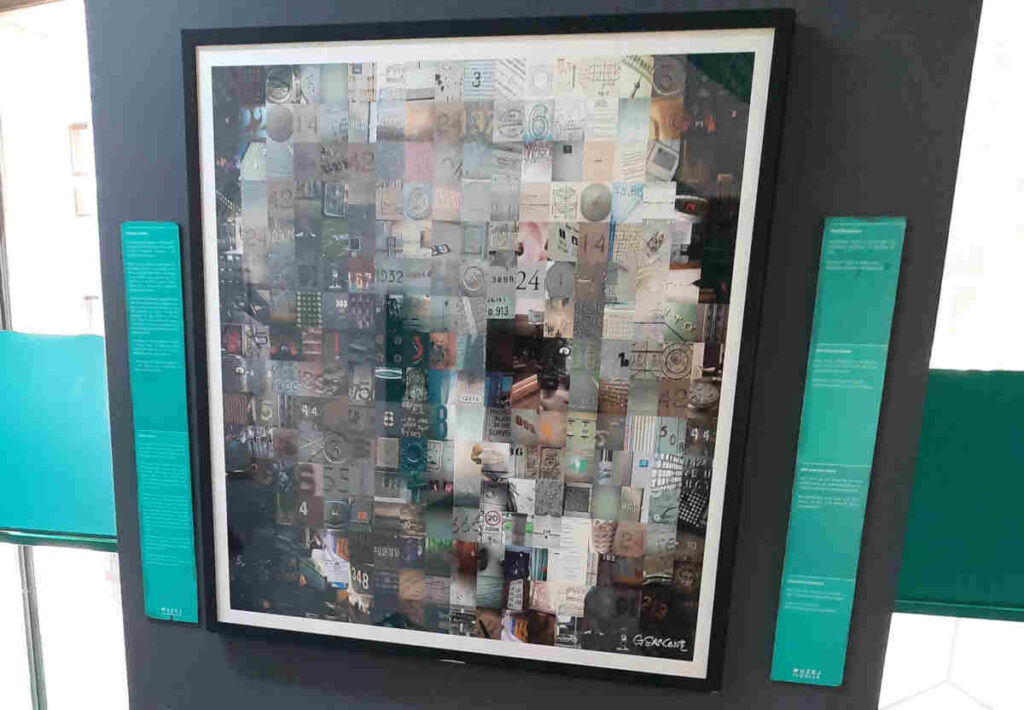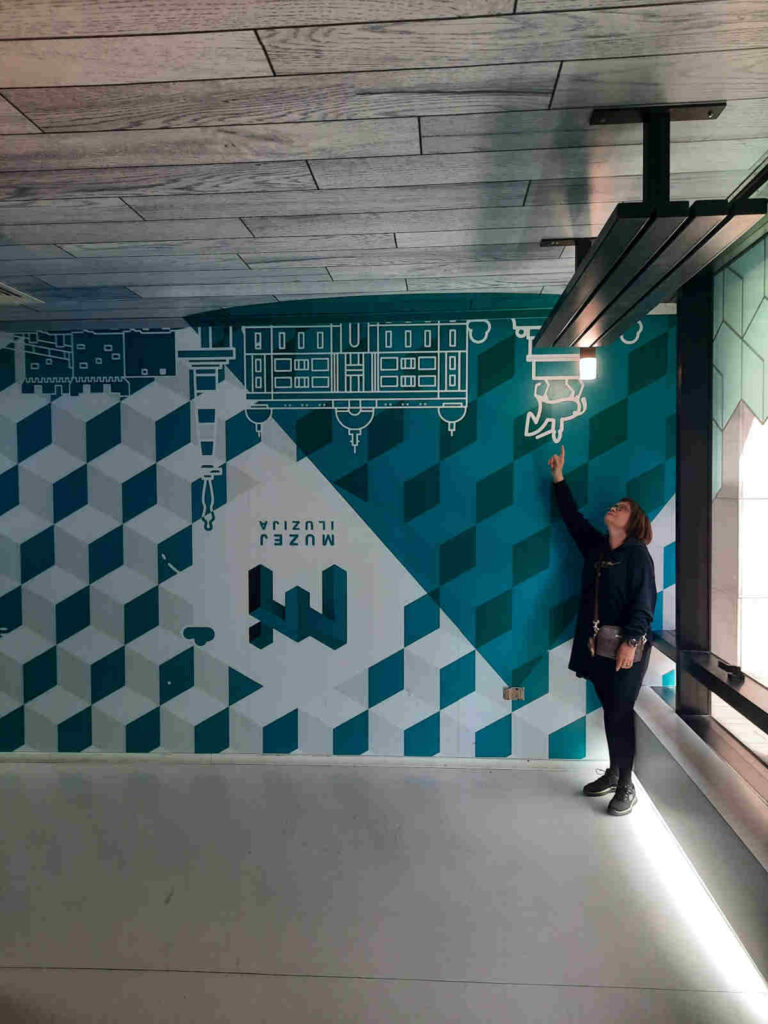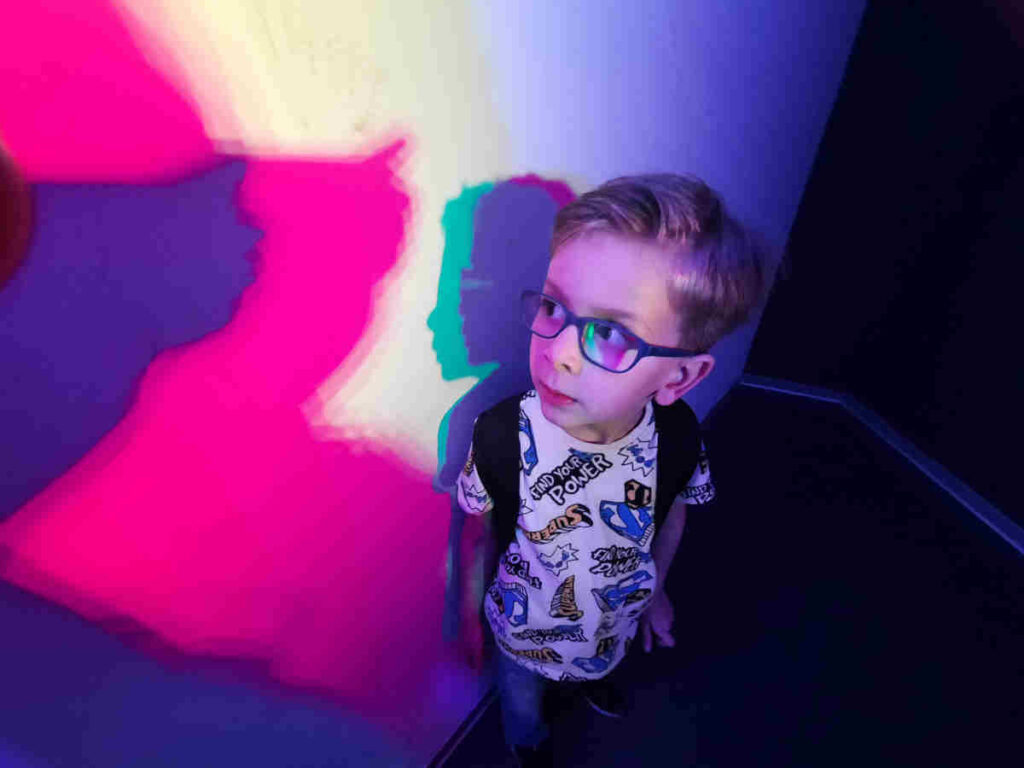The Museum of Illusions offers a one-of-a-kind experience that stimulates the mind and challenges perceptions. Located in the city center, the museum is a nice way to spend an hour or two in Belgrade. The exhibits are not only captivating for adults but also incredibly amusing for children, including the youngest visitors.

Introduction to the Museum of Illusions
This contemporary museum features a diverse array of exhibits that prompt you to question your senses and immerse yourself in the fascinating world of perception, the human brain, and various sciences including optics, geometry, biology, and psychology. It offers a deeper insight into why your eyes may perceive things that your brain struggles to comprehend.
Address: Nušićeva 11.
Getting to the Museum of Illusions is easy thanks to its central location, which makes it conveniently accessible by public transport. For those driving, paid parking is available in several centrally located garages, requiring a short walk to the museum.
Head on the Plate

One of the most entertaining and photogenic exhibits is Head on the Plate. Spoiler alert: The magic here is in the mirrors that conceal a person’s body. It has never been more fun to be served for dinner! This exhibit is a must-see for visitors looking for a unique and memorable photo opportunity.
The Ames Room
The Ames Room is an optical illusion that distorts perception to make objects appear larger or smaller than they actually are. It is named after American scientist Adelbert Ames Jr., who first created this illusion in 1946.

At first glance it appears to be a regular room, but it is intentionally distorted to create a perplexing perceptual experience for the observer. The illusion works because our brains use visual cues to perceive depth and size. In the Ames Room, these cues are manipulated, leading us to misjudge the size and distance of objects. It’s a compelling example of how easily our perceptions can be tricked, highlighting the complex nature of human vision.
The Chair Illusion

When viewed from a specific spot, this exhibit creates a convincing illusion of a chair. However, in reality, it is far from being one. The blue “sitting section” is actually a flat board on the floor, and the “legs” are positioned far apart, resembling nothing like a regular chair. This optical illusion challenges visitors’ perception of everyday objects and showcases the power of perspective in shaping our understanding of reality. Its clever design prompts viewers to question what they see and how their brains interpret visual information, making it a thought-provoking and engaging exhibit for all ages.
The Upside Down Room

The Upside Down Room is a mind-bending exhibit that defies gravity and challenges visitors’ perception of space. Everything in the room, from the bench to the wallpaper, is strategically placed to create the illusion that the room is flipped upside down. Visitors can take photos that make it appear as though they are walking on the ceiling.
The Following Eyes

The Following Eyes is an optical illusion where concave eyes appear convex. By observing them for an extended period and simultaneously moving to the left or right, Nikola Tesla’s eyes will appear to follow you around the room. You could say that Tesla just can’t take his eyes off you!
Kaleidoscope

Unlike traditional kaleidoscopes with colorful papers and pearls, here, visitors become the creators of mesmerizing patterns. As you peer into the kaleidoscope, your image multiplies and shifts, creating a dynamic and ever-changing display. Experience the magic of the kaleidoscope and see yourself in a whole new light at the Museum of Illusions.
Color Room

In the Color Room visitors are invited to catch their own shadows and play with colors in a vibrant and interactive setting. This immersive experience allows guests to create unique and original photos, showcasing their creativity and imagination. The Color Room is a fun and engaging exhibit that encourages visitors to explore the playful side of art and photography.
The Ponzo Illusion / The Müller-Lyer Illusion

To the left, you can see the Ponzo illusion, a fascinating geometrical-optical phenomenon first demonstrated by Italian psychologist Mario Ponzo in 1913. This illusion illustrates how the human mind perceives an object’s size relative to its background. Despite being the same length, the blue vertical lines appear to differ in size, highlighting the fascinating intricacies of visual perception.
To the right is the Müller-Lyer illusion, a compelling visual puzzle. Despite appearing otherwise, all the arrow shafts are actually of identical physical length.
Ehrenstein Illusion

The Ehrenstein illusion is a fascinating optical phenomenon where the sides of a square, when placed inside a pattern of concentric circles, appear to take on a curved shape.
The Jastrow Illusion

Can you believe that these two shapes are exactly the same size? The lower shape appears larger than the upper shape, yet they are actually identical. This is known as the Jastrow illusion, which occurs because the brain struggles to compare the curved shapes as complete entities.
Smart Corner

Within its exhibition space, the Museum of Illusions features a Smart Corner where visitors of all ages can play, compete, and learn. This interactive area encourages brain development and fun through Dilemma games – wooden puzzles that enhance cognitive abilities. These educational games promote cognitive and spatial skills, organizational skills, and logical reasoning in an innovative way, while also fostering creativity and out-of-the-box thinking. Additionally, on the ground floor, at the end of your visit, you’ll find a shopping area offering a rich selection of educational and brain-teasing games.
Conclusion
The Museum of Illusions in Belgrade offers a delightful way to spend a couple hours, particularly enjoyable for families with children, much like the Chocolate Museum. However, if you’re in Belgrade for just a few days, I recommend prioritizing a visit to the National Museum. There, you can explore the rich heritage of the region, including fascinating artifacts from prehistoric times and remarkable European art. Another must-see is the Nikola Tesla Museum, which features exhibits found nowhere else in the world, including the scientist’s urn and personal belongings.
To plan your visit and find up-to-date information about the Museum of Illusions’ working hours and ticket pricing, visit their website’s contact page.
Have you had the opportunity to visit the Museum of Illusions, either in Belgrade or in another city? We’d love to hear about your experience! Share your impressions with us in the comments below.


Leave a Reply